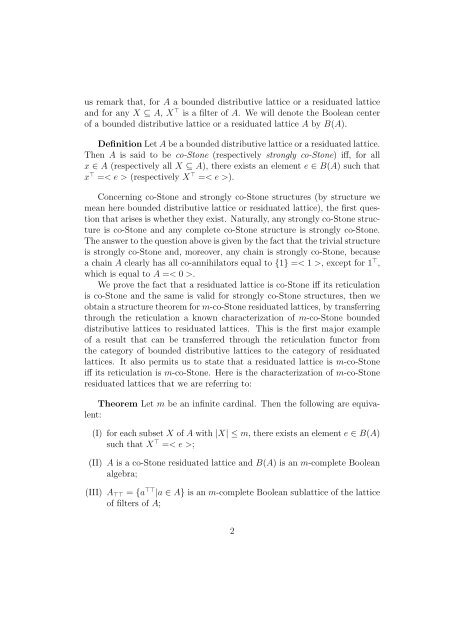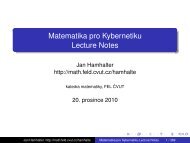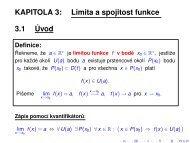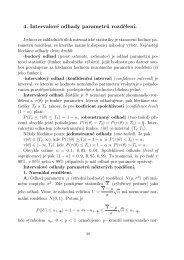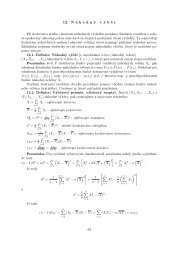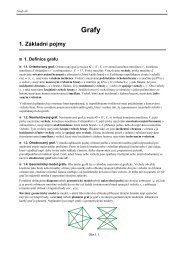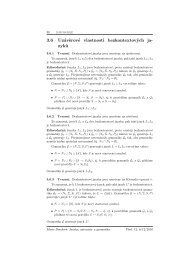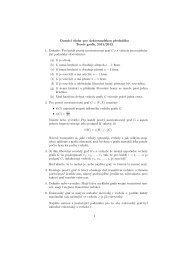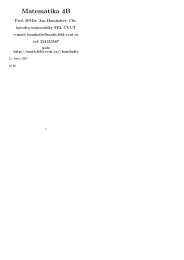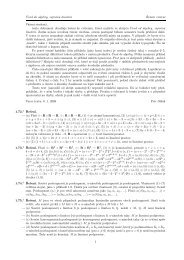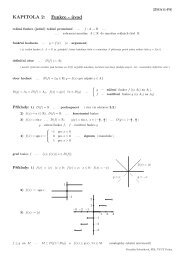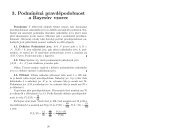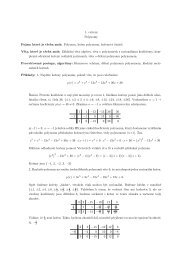Co-Stone Residuated Lattices
Co-Stone Residuated Lattices
Co-Stone Residuated Lattices
You also want an ePaper? Increase the reach of your titles
YUMPU automatically turns print PDFs into web optimized ePapers that Google loves.
us remark that, for A a bounded distributive lattice or a residuated lattice<br />
and for any X ⊆ A, X ⊤ is a filter of A. We will denote the Boolean center<br />
of a bounded distributive lattice or a residuated lattice A by B(A).<br />
Definition Let A be a bounded distributive lattice or a residuated lattice.<br />
Then A is said to be co-<strong>Stone</strong> (respectively strongly co-<strong>Stone</strong>) iff, for all<br />
x ∈ A (respectively all X ⊆ A), there exists an element e ∈ B(A) such that<br />
x ⊤ =< e > (respectively X ⊤ =< e >).<br />
<strong>Co</strong>ncerning co-<strong>Stone</strong> and strongly co-<strong>Stone</strong> structures (by structure we<br />
mean here bounded distributive lattice or residuated lattice), the first question<br />
that arises is whether they exist. Naturally, any strongly co-<strong>Stone</strong> structure<br />
is co-<strong>Stone</strong> and any complete co-<strong>Stone</strong> structure is strongly co-<strong>Stone</strong>.<br />
The answer to the question above is given by the fact that the trivial structure<br />
is strongly co-<strong>Stone</strong> and, moreover, any chain is strongly co-<strong>Stone</strong>, because<br />
a chain A clearly has all co-annihilators equal to {1} =< 1 >, except for 1 ⊤ ,<br />
which is equal to A =< 0 >.<br />
We prove the fact that a residuated lattice is co-<strong>Stone</strong> iff its reticulation<br />
is co-<strong>Stone</strong> and the same is valid for strongly co-<strong>Stone</strong> structures, then we<br />
obtain a structure theorem for m-co-<strong>Stone</strong> residuated lattices, by transferring<br />
through the reticulation a known characterization of m-co-<strong>Stone</strong> bounded<br />
distributive lattices to residuated lattices. This is the first major example<br />
of a result that can be transferred through the reticulation functor from<br />
the category of bounded distributive lattices to the category of residuated<br />
lattices. It also permits us to state that a residuated lattice is m-co-<strong>Stone</strong><br />
iff its reticulation is m-co-<strong>Stone</strong>. Here is the characterization of m-co-<strong>Stone</strong><br />
residuated lattices that we are referring to:<br />
Theorem Let m be an infinite cardinal. Then the following are equivalent:<br />
(I) for each subset X of A with |X| ≤ m, there exists an element e ∈ B(A)<br />
such that X ⊤ =< e >;<br />
(II) A is a co-<strong>Stone</strong> residuated lattice and B(A) is an m-complete Boolean<br />
algebra;<br />
(III) A⊤⊤ = {a ⊤⊤ |a ∈ A} is an m-complete Boolean sublattice of the lattice<br />
of filters of A;<br />
2


